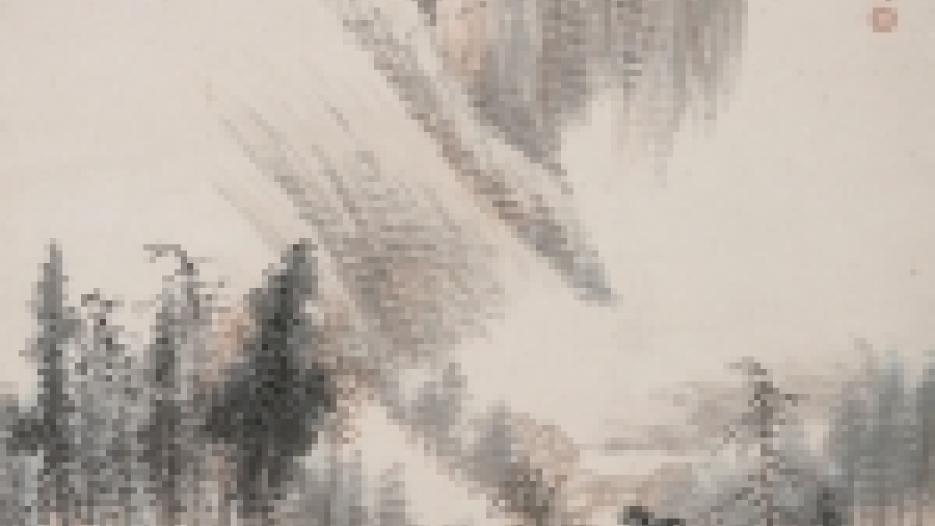
Chinese ink painting has a tradition of 2000 years. In Chinese thinking, literature was considered the premier form of art and discipline, with painting being the second most important. The two, however, developed in close association: ink-and-brush calligraphy, and the almost unconscious movements associated with it, served as the basis of traditional ink painting. The Chinese masters had a high regard for the work and knowledge of their predecessors, and as a result, traditional Chinese ink painting changed little in the past centuries. The most beautiful pieces associated with a subject or composition mode will feature a nearly complete catalogue of the characteristic elements of a given class of works. The elongated pictures usually represent lands, plants, flowers and birds, while humans are a rarer subject, and even then appear as small figures in the landscapes.
The images are always accompanied by inscriptions – usually lines of poetry or aphorisms –, which enrich the meaning of the former. Thanks to this special symbiosis of literature and painting, the same exhibition will introduce visitors not only to the technique of ink wash painting but to important aspects of Chinese philosophy and literature as well. These images bring to life the everyday reality of ancient China, the beautiful diversity of the natural environment, and through the realistic representation of birds and plants, they bear witness to Chinese thought and its deep attachment to nature.
In addition to presenting a traditional philosophy and art that are quite different from their European counterparts, the exhibit also shows how this style influenced the develop-ment of modern European painting in the last third of the 19th-century. Without an awareness of Japanese woodcuts and Chinese ink paintings, Van Gogh, Gauguin, Toulouse-Lautrec and other masters of French post-Impressionism could not have arrived at the new vision of painting that was to lay the foundations of the modern approach. The exhibition provides a rare perspective for the Central European visitor: with a view into the tradition of Chinese painting and an analysis of its influence on the modern painting of Europe, it throws a light on the secrets of a “different” mentality, and offers a unique opportunity for development.